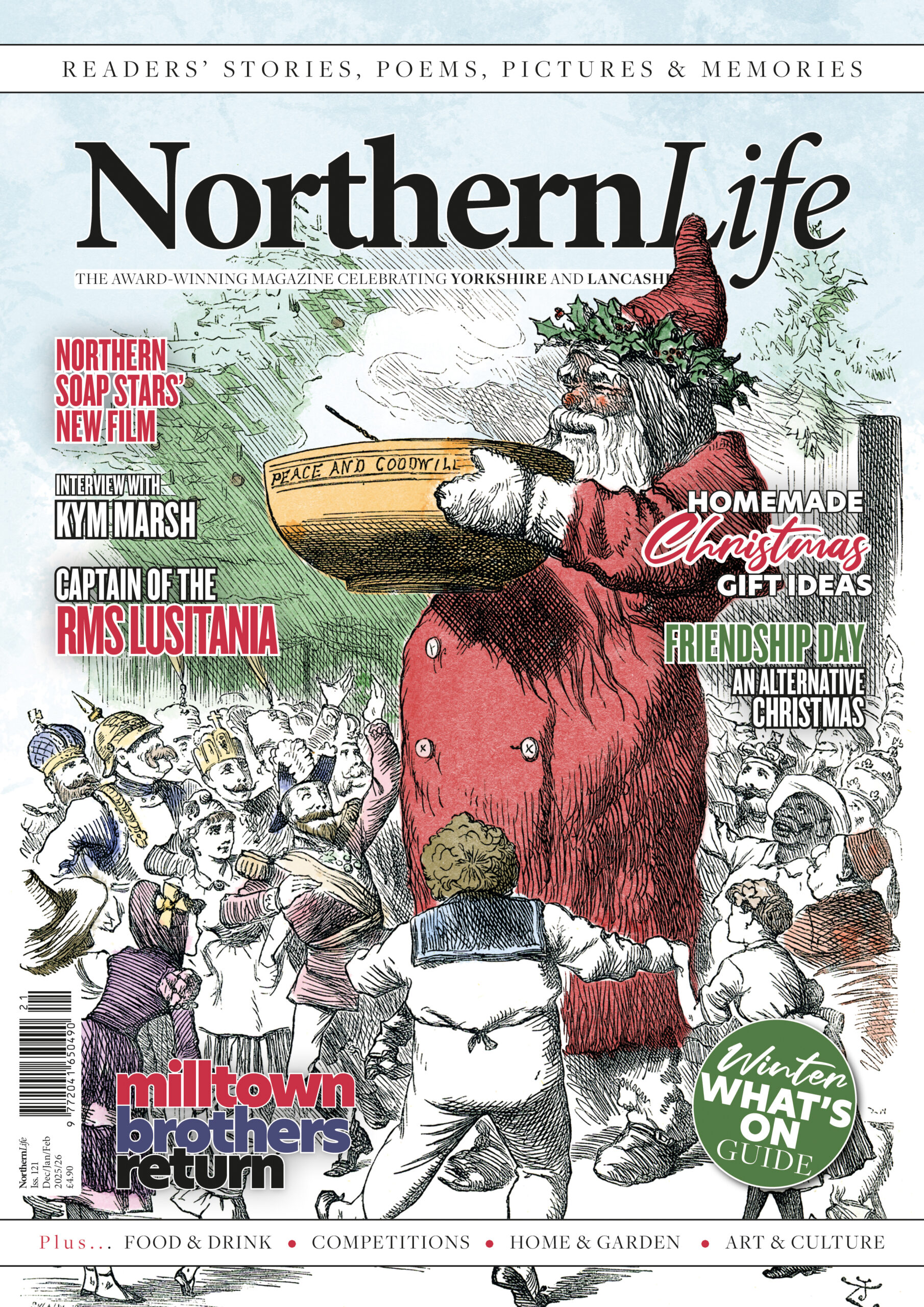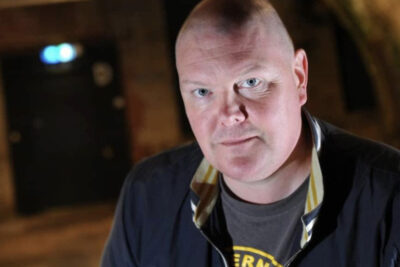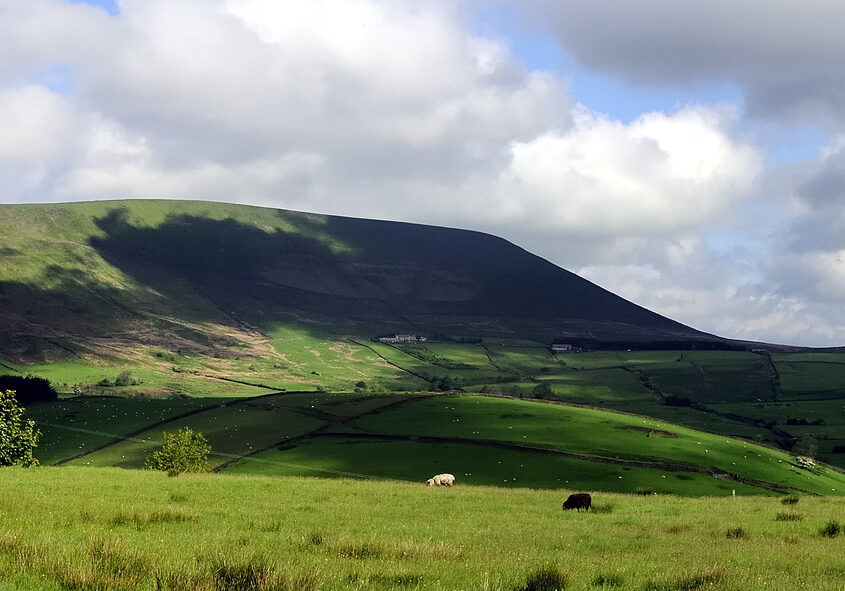
Unlocking the Secrets of Burnley and Pendle’s Past
by Margaret Brecknell
This new book explores the lesser-known and secret hidden illustrated heritage of Burnley and Pendle
Walking through the streets of modern Burnley, it is hard to imagine that this small East Lancashire town was once heralded as the cotton-weaving capital of the world. Yet multiple clues to Burnley’s remarkable industrial past are still visible if you know where to look, and that is just the starting point when it comes to unlocking the secret history of Burnley and the surrounding area. In my latest book, Secret Burnley and Pendle, I explore the industrial and cultural heritage of this unique part of the world.

Author Margaret Brecknell
This particular corner of East Lancashire is very close to my heart. My father, Frank, was born in Burnley, just a couple of streets away from the town’s famous football ground. My mother, Kathleen, came from Nelson, where her family owned a butcher’s shop on Manchester Road. I have many happy childhood memories of trips to visit sadly now long-gone relatives in Burnley, Nelson and Colne. It was no surprise that these visits would often coincide with Burnley FC home games. My father remained a Clarets fan all his life, and half a century or so later, both of his children are still Burnley season ticket holders.
When it comes to revealing clues to the past hidden in plain sight in our modern town centres, it generally pays to look upwards…
Packed full of interesting images, both old and new, Secret Burnley and Pendle is the third book I have written for Amberley Publishing’s local history series, following on from Secret Skipton (published in 2020) and Celebrating Southport (2022). It’s been fascinating to delve deep into the history of the area that has captured my imagination for so long and, in particular, to discover more about some largely forgotten stories from its past.
When it comes to revealing clues to the past hidden in plain sight in our modern town centres, it generally pays to look upwards, although this piece of advice does come with a health warning. Take it from one who knows that if you spend too much time looking up at buildings, you will inevitably faceplant the pavement at some point! On the plus side, you see interesting little details, such as the elaborately carved cornice above the doorway of the building now occupied by the Palazzo Restaurant in Burnley. Originally home to the Manchester and County Bank (and later Nat West), further research revealed that these elegant premises were modelled on the famous Medici Palace in Florence.
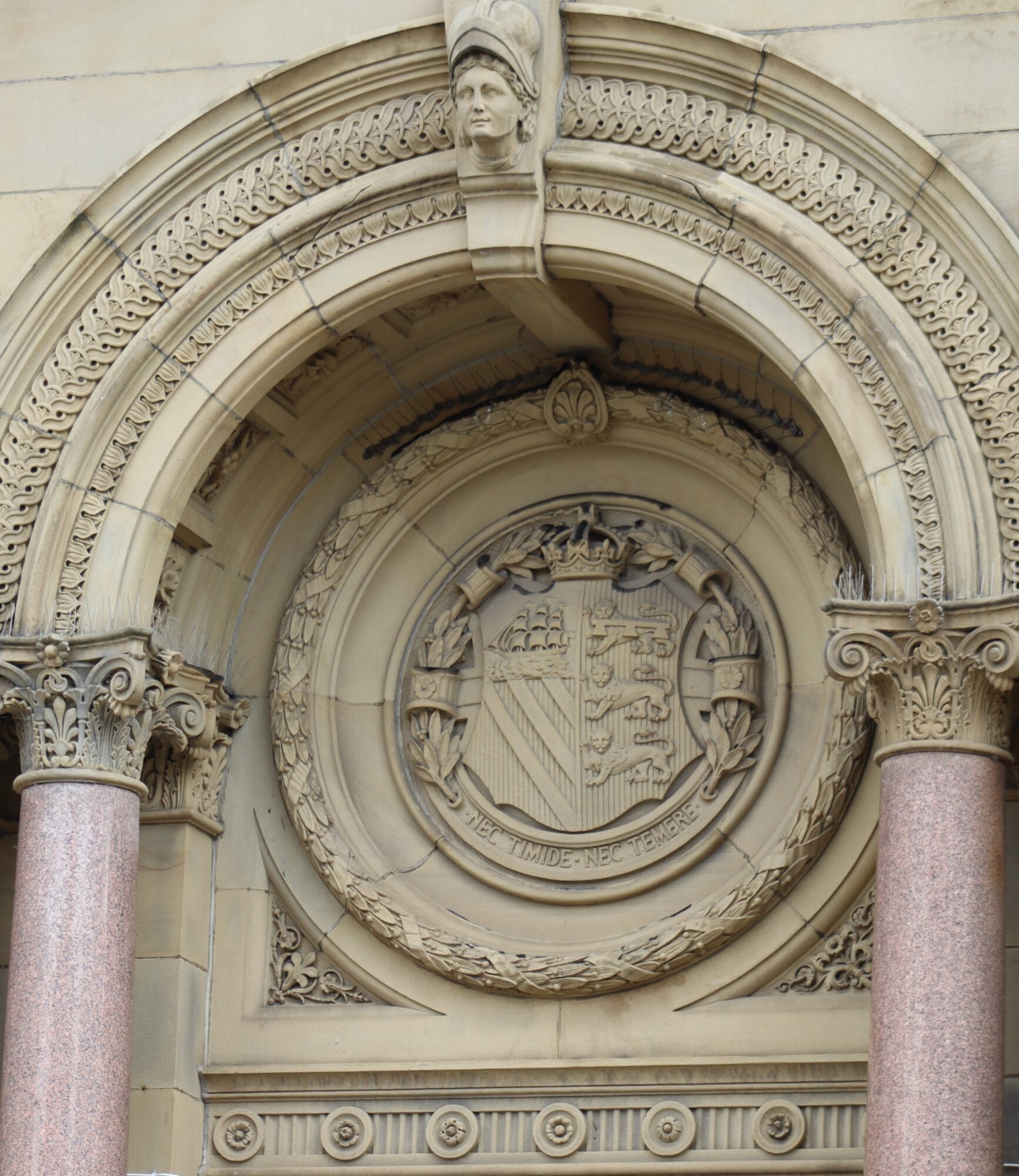
Intricate carving on Burnley building inspired by Florence’s Medici Palace
Similarly, the impressive three-storey renaissance-style building on Hammerton Street, formerly occupied by the Burnley Co-Operative Society, hints at the considerable wealth and prosperity that the town once enjoyed as an industrial powerhouse.
We all know that an area’s history is about so much more than its buildings, however impressive they are, and a highlight for me was to learn more about the local people from the past, whose indomitable spirit and resilience helped to make Burnley and Pendle what it is today.
I discovered how local people in Nelson campaigned for better working conditions and why the town became known as “Little Moscow” in the national press.
The mills offered the prospect of relatively steady work at a time when employment opportunities in more traditional occupations, like agriculture, were becoming increasingly scarce because of mechanisation. However, this regular employment came at a price for many of our Victorian ancestors, who frequently had to endure appallingly grim working and living conditions. It is little wonder, then, that local places like the then-new town of Nelson became regarded as hotbeds of socialist militancy. In Secret Burnley & Pendle, I discovered how local people in Nelson campaigned for better working conditions and why the town became known as “Little Moscow” in the national press.
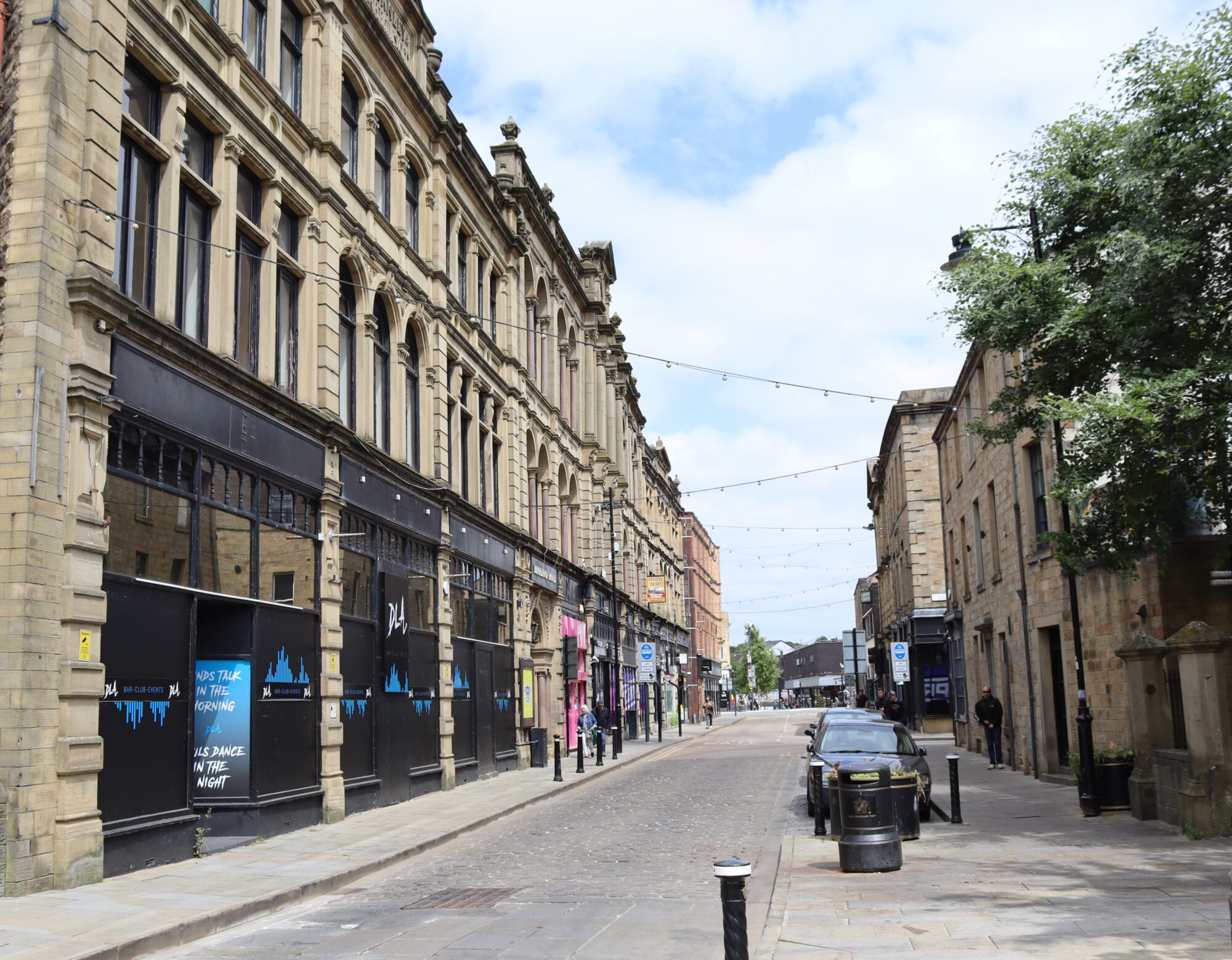
Former Co-Operative Society premises in Burnley looking down Hammerton Street
Of course, Burnley and Pendle’s history doesn’t begin and end with the Industrial Revolution. People from this part of the world have long since had to learn how to deal with injustice. Way back in 1612, nine local people, mostly women, were found guilty of witchcraft and publicly hanged. The trial at Lancaster Castle lasted just two days. The prisoners were not allowed to speak for themselves nor given any legal representation, and, remarkably, the main witness for the prosecution was just nine years of age.
The story of the Pendle Witches, as we know them today, has been retold so many times over the years that it has become quite difficult to distinguish between fact and fiction. In Secret Burnley & Pendle, I investigate the circumstances leading to their initial arrest, which appear to have had as much to do with a prevailing national climate of religious intolerance as local unease with those who allegedly practised witchcraft:
“Following the infamous Gunpowder Plot of 1605, which a group of disenchanted Roman Catholics led, James I began to introduce a range of punitive sanctions against recusants, i.e. those who consistently failed to attend Sunday service at their local Church of England place of worship…Thus, in early 1612, every Justice of the Peace in Lancashire was instructed to come up with a list of known recusants in their area. Roger Nowell of Read Hall, the then JP for the Pendle district, was probably just one of many who saw this as an opportunity to make a name for himself and find favour in royal circles. When, in March of that year, a local woman was accused of witchcraft, he quickly seized the moment…
Alizon Device was alleged to have placed a curse on a pedlar named John Law whilst out begging near Colne. Unfortunately for Device, the old pedlar collapsed almost immediately afterwards and died within days, probably of a stroke. Device was summoned for questioning by Roger Nowell, along with her mother, Elizabeth, and brother, James.
“The hapless Alizon appears to have genuinely believed that she was responsible for John Law’s death…”
The trio appear to have been completely overawed by the proceedings and, under pressure from Nowell, committed a series of dangerous faux pas. The hapless Alizon appears to have genuinely believed that she was responsible for John Law’s death and, perhaps out of a sense of guilt, effectively condemned herself to death by admitting to the charge of witchcraft. As if that was not enough, the trio combined to bring the family matriarch, Elizabeth Southerns, under suspicion too, claiming that the elderly woman had a specific type of mark on her body which was associated with the devil…”
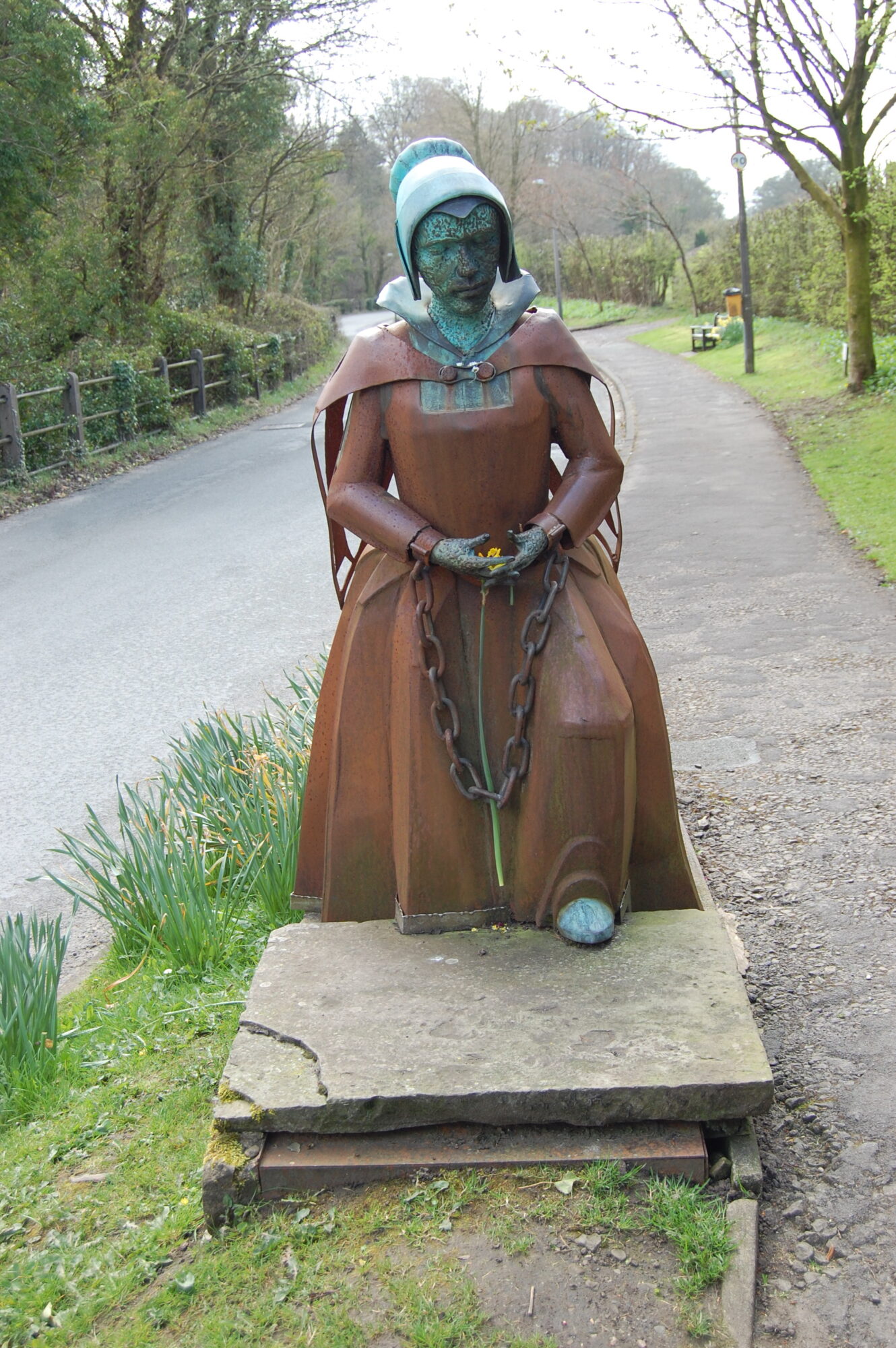
Statue of Alice Nutter at Roughlee
I also reveal how an 1848 gothic novel, called The Lancashire Witches, has been credited with kickstarting the lucrative tourism industry, based around their tragic story, that is still thriving today:
“In the mid-nineteenth century, William Harrison Ainsworth’s novel, The Lancashire Witches, sparked a huge revival in interest in the Pendle Witch Trials. Although the man known as ‘the Lancashire novelist’ is little known today, Manchester-born Ainsworth was regarded as one of the leading authors of the Victorian era, at one point even rivalling the great Charles Dickens in popularity. He had already written several bestselling novels, very much in the genre of historical gothic romance made popular by the likes of Sir Walter Scott, before turning his attention to the story of the Pendle witches…
“Still, his portrayal of the leading characters left an impression on the public consciousness that has stuck to this day.”
The subject matter suited Ainsworth’s style of writing perfectly, and he threw everything at it, producing a novel that was packed full of supernatural goings-on, ugly old crones, curses-a-plenty and even the odd evil monk or two. His interpretation of events may have owed more to the tradition of gothic romance than historical fact. Still, his portrayal of the leading characters left an impression on the public consciousness that has stuck to this day.”
My research revealed some really fascinating stories, not least a grisly tale relating to the severed head of an unfortunate ancestor…
Religious intolerance also blighted the lives of the wealthy family who once resided at Burnley’s Towneley Hall. The Grade 1-listed stately home (a particular favourite of my late father) dates back to the medieval period and was home to the Towneley family for over 500 years. For much of that time family members faced relentless persecution because of their Roman Catholic faith, yet continued to display in bucket-loads that same local resilience to which I referred above. My research revealed some really fascinating stories, not least a grisly tale relating to the severed head of an unfortunate ancestor. It reportedly became a talking point at 19th-century dinner parties.
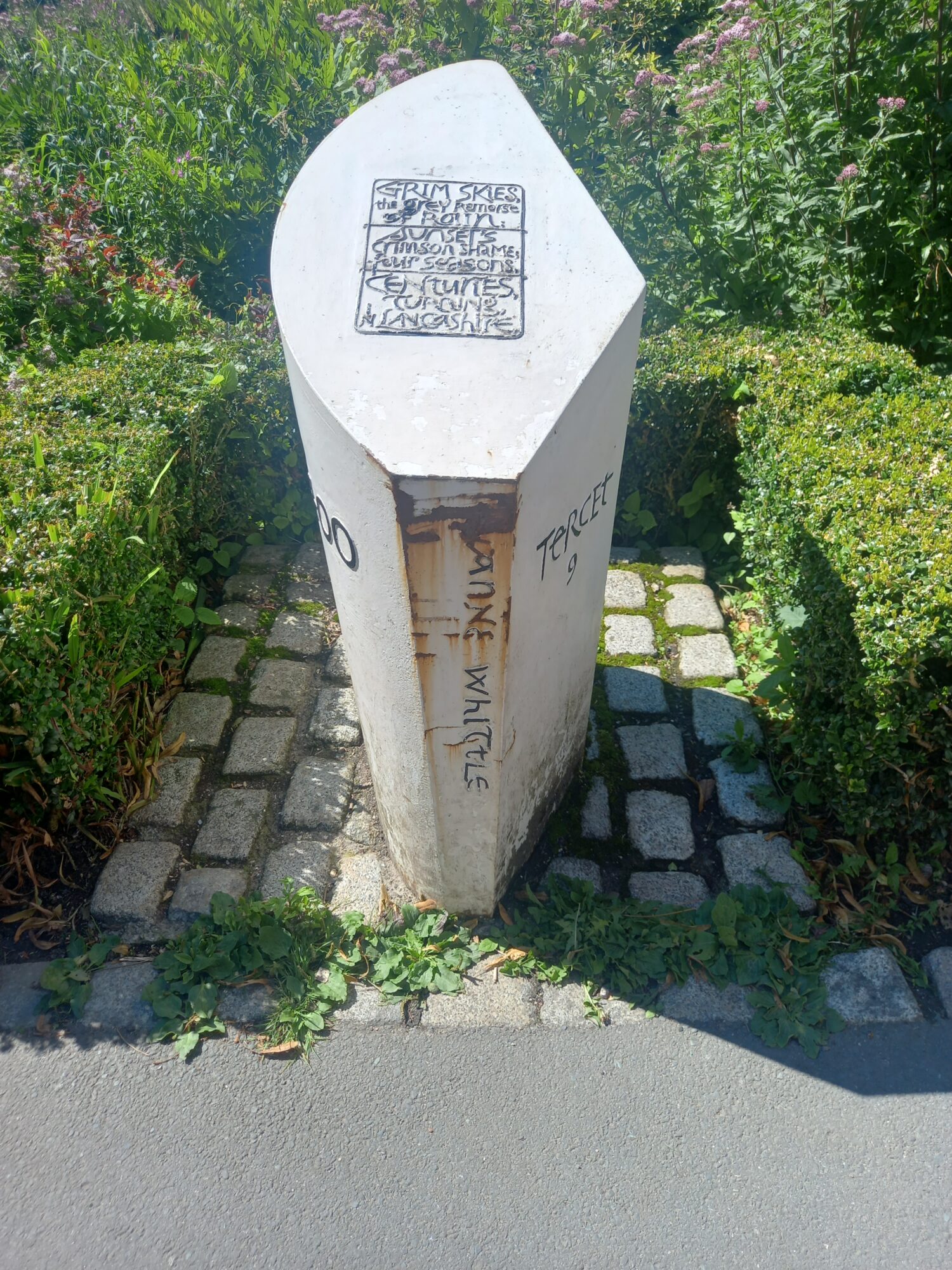
Tercet stone in Lancaster commemorating Anne Whittle
The Shuttleworth family of nearby historic Gawthorpe Hall may have proved more adept than their Towneley counterparts in picking the right side during turbulent periods in British history. Still, they also faced their triumphs and disasters.
Interesting 20th-century stories include Colne’s famous Titanic hero and Burnley’s unlikely two-year stint as Britain’s theatre capital. Secret Burnley & Pendle also features a chapter on local sporting tales, mainly from the late 19th and early 20th centuries. These include a Burnley goalkeeper’s involvement in one of the earliest known football betting scandals and the manager who died in a tragic accident whilst en route to register a new player in London. I also hark back to the occasion when Nelson FC famously became the first English club to defeat Spanish giants Real Madrid on their home turf.
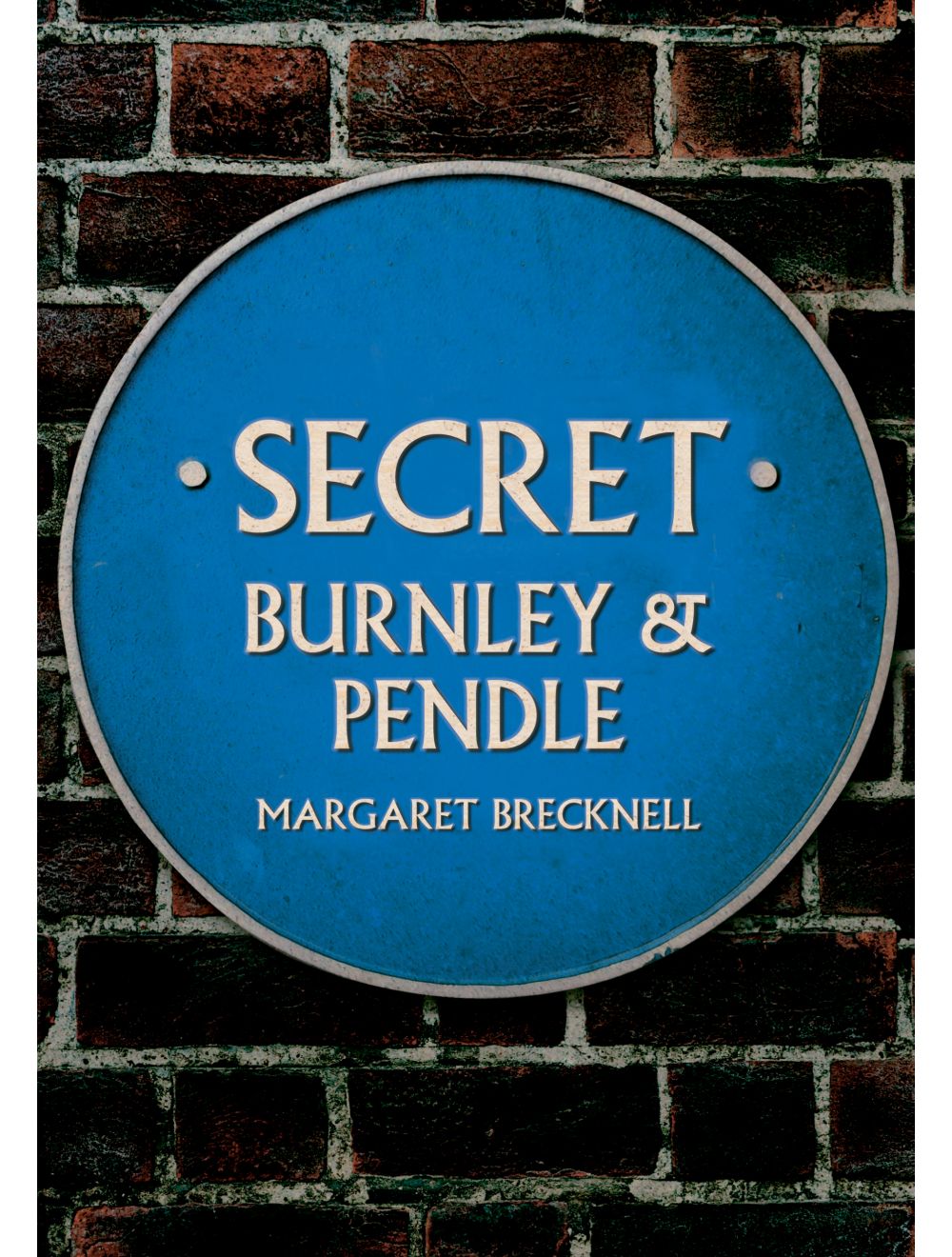
These are just a few of the fascinating topics covered in Secret Burnley & Pendle. If this preview has whetted your appetite, the book is available now for pre-order at www.amberleybooks.com and other major online retailers. Here, you will also find details of my two previous titles. Following its publication on 15th October 2024, Secret Burnley & Pendle will also be on sale at a selected range of local high street and independent bookshops, as are my two earlier books.
If you wish to learn more about my writing, please visit me on X (formerly Twitter) at @mabrecknell.
NorthernLife Sep/Oct/Nov 24
